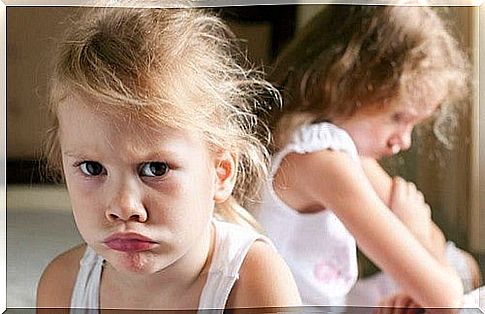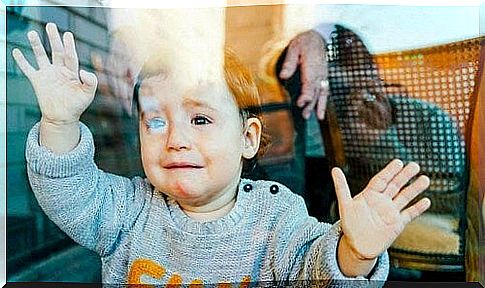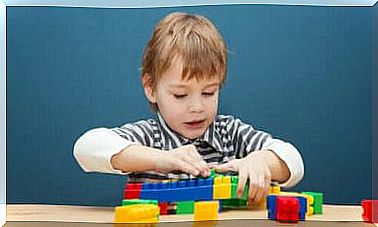The First Signs Of Anxiety Appear At 14 Months

The first signs of anxiety appear as early as 14 months. At least, this is what a study that lasted over thirty years reveals. The results could not have been more illuminating or more incisive.
In a certain sense, the character and temperament of the human being are already visible at an early age and these traits, after years, show a more or less accentuated tendency to stress and anxiety.
Does this mean that the most temperamental newborn, for example, could suddenly develop an anxiety disorder? Obviously not. We cannot draw such hasty conclusions.
There is a link between certain behavioral patterns and the risk of developing a thought pattern marked by worry, anxiety, panic attacks, etc.
Scientists speak of “emotional overexcitation”, a characteristic that we can observe in children already during their first year of life and that determines, in many cases, the behavior over time.

What is the child’s temperament?
Scientists at the University of Maryland published a study whose purpose was to pinpoint the time in life when the first signs of anxiety appear.
This study was conducted by Dr. Alva Tang and the findings indicate that children just over one year old already exhibit a well-defined temperament, which can reveal interesting data.
Precisely on the basis of these styles, it is possible to predict a greater or lesser predisposition for specific psychopathologies, such as anxiety, stress, depression. Well, before delving into these data, we must clarify what is meant by temperament in childhood. We talk about it in the following lines.
The difference between temperament and character
Temperament is associated with biology and, in particular, with the congenital emotional predisposition of each of us. It basically indicates how we react to the environment around us.
We find ourselves, therefore, in front of an innate dimension, which is born with us and which is observable in any newborn. In fact, it is sufficient to note how he acts and how he reacts towards his context of belonging.
Character, on the other hand, distances itself from this genetic and hereditary nature and rather associates itself with sociocultural learning and experience itself.
Well, the most interesting aspect is that this last characteristic assumes greater importance: that is to say that the character can control the temperament; it is those who own it who can modify it to better adapt to the environment to which it belongs.
The latter aspect assumes great importance. Although, as the University of Maryland study indicates, anxiety appears as early as 14-month-olds – and it depends on their temperament – we can still educate them and offer them the means to develop appreciable emotional skills.

The first signs of anxiety are already visible at 14 months
Scientists had set themselves the goal of identifying the exact moment when the first symptoms of “emotional over-excitement” begin to manifest. But what are we referring to when we talk about this dimension?
It actually indicates a number of dimensions that we might know very well: for example, constant worry, panic attacks, insecurity, fear of being judged, being anxious about something that hasn’t happened yet, being negative, fatalistic …
In reality, anxiety disorders are an increasingly widespread dimension; a condition that, moreover, precedes depression or manifests itself with it. Given the impact it has, it was critically important to know more about this trigger and its origins.
Therefore, thanks to the aforementioned research study, it emerged that the roots of anxiety appear in the child at 14 months.
The shy temperament and the anxious child
Currently there are few scientific data relating to the infantile temperament and the relationship of the latter with the adult personality.
To date, we know that a temperament known as “behavioral inhibition” predicts the appearance of anxiety and depression problems in adult life.
The data may be quite surprising, but it is interesting to delve deeply into the nature of this style of temperament and, in particular, into behavioral inhibition.
- These are small children with a great fear of novelty, even if they are new toys or everyday objects.
- Furthermore, these children tolerate changes very badly, however minimal they are.
- They cannot bear to be in the company of figures other than their parents.
- On the other hand, although the roots of anxiety can already be found in children of 14 months of age, it is from the age of two or three that the symptoms intensify. An often observable aspect is somatization: headache, stomach pain, diarrhea, etc.
- As they grow up and begin to expose their reasoning they acquire doubts and fears. “Surely if I go to school today they will laugh at me”, “what if my parents die?”
- Evasive behaviors are common, such as the fear of going to school, of cycling, of swimming .. Moreover, these are children who feel the need to sleep often with their parents.
If the first signs of anxiety appear from 14 months of age, how can we educate an anxious baby?
Now that we know that anxiety has its roots as early as 14 months, what to do with a child who exhibits a behavioral inhibition temperament?
- For example, habits are a fundamental key to reassuring any type of newborn.
- Developing a healthy attachment in which the little one can feel safe and listened to at all times is an important aspect.
- We need to intervene on elusive behaviors and fears when they appear. Here emotional education becomes a guarantee of success.
The child must rationalize his fears, understand his emotions and manage them to turn off anxiety and irrational ideas.
This takes time and patience, because to shape the character of the adult of tomorrow you need to sow self-esteem, self-confidence and self-awareness.









